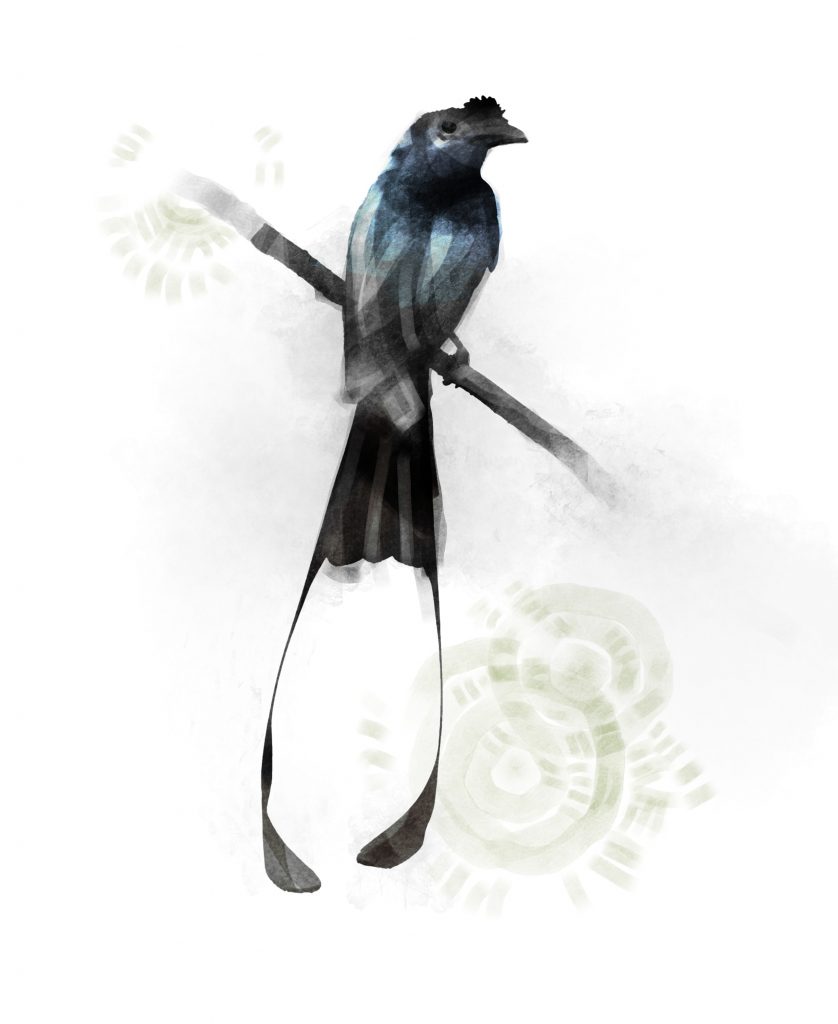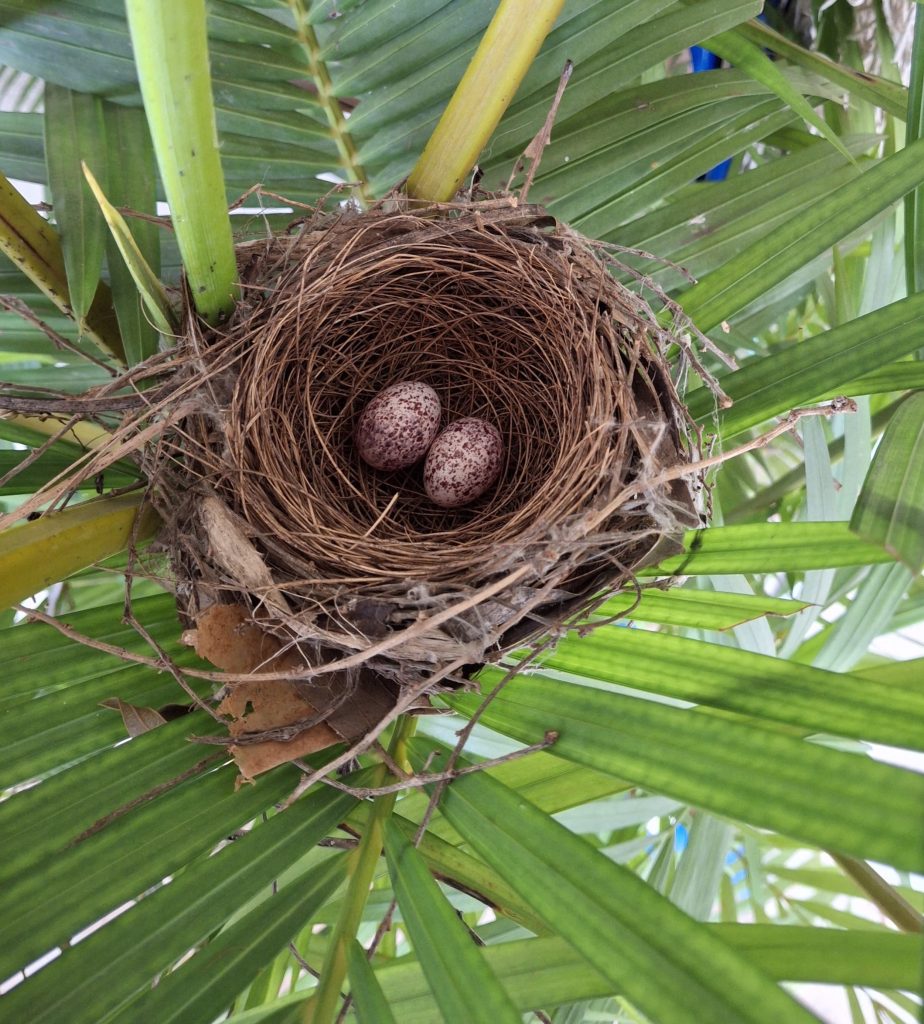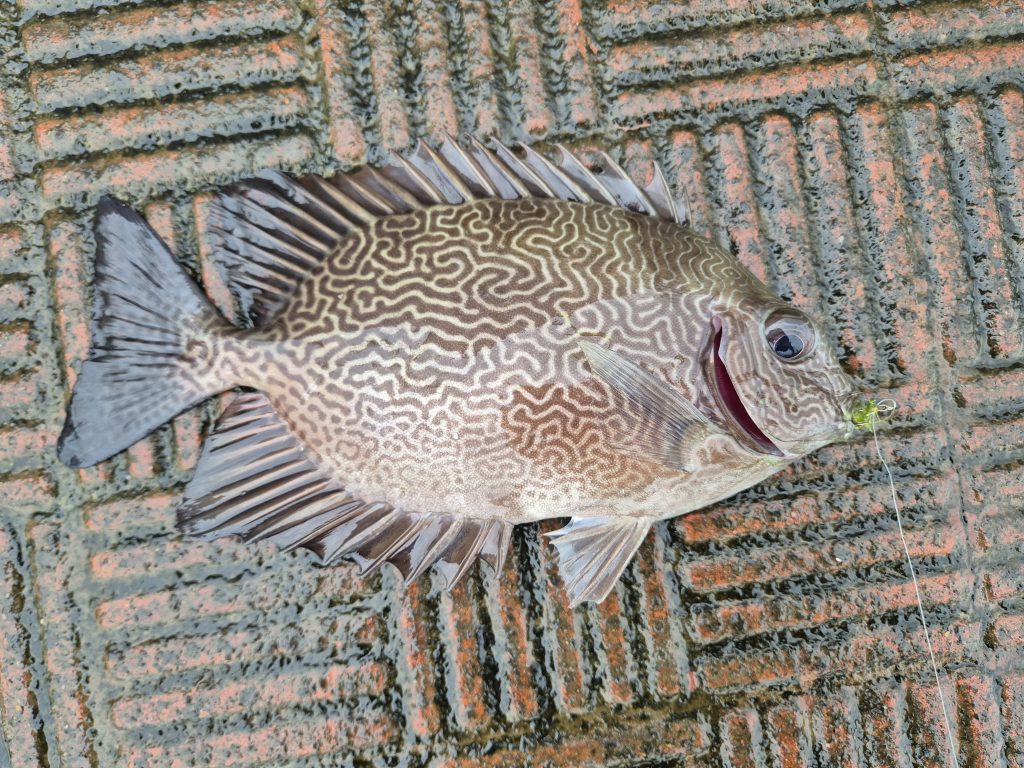The gift for mimicry fills me with awe—the ease with which artists mimic the voice, expressions, and mannerisms of another individual. In the Animal Kingdom, most of us have heard of social birds like parrots and mynas, which are capable of mimicking human speech in captivity. But there are other mimicry artists out there in the wild. Have you ever seen the greater racket-tailed drongo in action? It is a highly vocal bird with black plumage that has a wide distribution across Southeast Asia.
Although I had seen this species several times around my home in Kannur, Kerala, I learnt more about their peculiar behaviour only when I started birdwatching during my postgraduate course in Wayanad. What began as a hobby soon became the focus of my research. Drongos are relatively easy to identify and amongst them, the greater racket-tailed drongos stand out with their beautiful, wiry tail streamers, which end in small racket-shaped feathers. With such fancy tails, their flight is indeed a stunning sight. This species is famous among birdwatchers for its incredible vocal mimicry.

I never failed to record sightings of greater racket-tailed drongos on my daily campus birding sessions. One day, as part of the fieldwork for my Master’s project, my friend, Nithin, and I set out for birding in a nearby coffee plantation. A particular spot, that was usually full of bird activity and filled with calls, was relatively silent that day. We kept walking, ducking below and clambering over branches of the trees and coffee shrubs, careful not to disrupt tenacious spider webs and shrugging off leeches that had crawled their way up our clothes. All the while, we kept our hopes up. All of a sudden, we heard a loud, repetitive, familiar call. We stopped in our tracks and listened. Soon we identified it as the call of the crested serpent eagle, a common raptor in the area—one of the first bird calls we learnt and memorised. We then started walking towards the source of the sound. This call, however, was coming from a fixed position, unlike the typical call of serpent eagles, which slowly fades as they soar away. I told Nithin that the bird was definitely perched somewhere close by. I got my camera ready to get a picture. We walked slowly and carefully before stopping at a location where the call sounded close.
We were surrounded by tall trees with thick canopies. We looked around, peering through branches, twigs and leaves, trying to locate a large bird. The call was repeated several times while we tried to locate it. A sudden movement at the end of a branch 10–12 meters away caught my attention. I zoomed in with my camera to check, and there it was. A drongo! Out in the open, nicely perched on a branch, tail streamers swaying in the cool breeze. There was no sign of a crested serpent eagle.
As happy as I was to see the racket-tailed drongo, something struck me as odd. We could still hear the eagle and I could see the drongo’s beak moving. Confused, I started recording a video to be completely sure that what I was hearing, seeing, and thinking at the time made sense. Soon after, the drongo flew away and the eagle’s call stopped as well. We then observed a small nest with two hatchlings, which we later identified as belonging to the greater racket-tailed drongo. It took me some time to realise that we had witnessed a perfect mimicry of the crested serpent eagle by this talented avian artist, and that I had fallen prey to its clever deception. Since then, I have been fooled by the drongo’s vocal tricks several times in almost every birding session.

Greater racket-tailed drongos are known to mimic almost all birds, mammals such as the Malabar giant squirrel, and even inanimate objects, such as camera shutters or the reverse tune of a car! Studies suggest that vocal mimicry is used by drongos to invite other species in their habitat to form groups. These are known as mixed-species flocks or mixed hunting parties, a type of group behaviour by which individual birds obtain benefits in the form of increased foraging opportunities and protection from predators. However, mimicking calls of predators is observed mostly during the breeding season, near their nests. Hypotheses suggest that predator mimicry near their nests provide an environment where the young ones can learn sounds that are connected with danger, or it could serve to distract perceived threats away from the nest. Mimicry could also play a role in attracting mates and is also known in other species, such as lyrebirds, as well.
Such complexities of bird behaviour make birdwatching all the more interesting and leads me to wonder whether the term ‘bird brain’ should be taken as an insult. Birding brings me immense joy. And it is even more thrilling when a greater racket-tailed drongo is around because who knows what it might be up to!
Further Reading
Goodale, E. and S. W. Kotagama. 2006. Vocal mimicry by a passerine bird attracts other species involved in mixed-species flocks. Animal behaviour 72(2): 471-477.
Goodale, E., C. P. Ratnayake and S. W. Kotagama. 2014. The frequency of vocal mimicry associated with danger varies due to proximity to nest and nesting stage in a passerine bird. Behaviour 151(1), 73-88.






